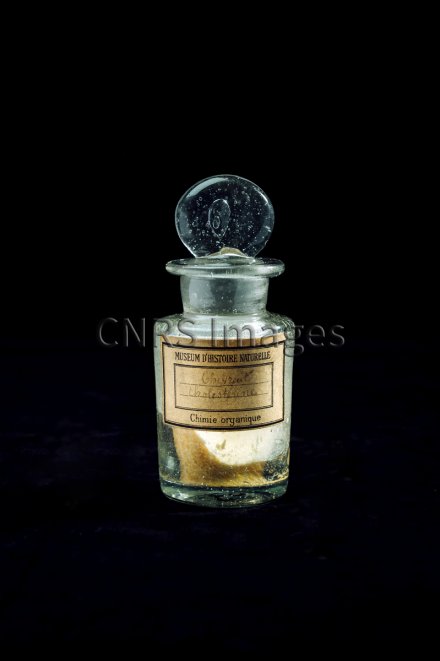Production year
2022

© Cyril FRESILLON / MCAM / CNRS Images
20220133_0004
Cholestérol conservé dans la "chimiothèque historique", collection du Muséum national d'Histoire naturelle gérée par l’unité "Molécules de communication et adaptation des micro-organismes" (MCAM). Dans ce flacon se trouve le premier échantillon de cholestérol. Si tout le monde connaît aujourd’hui ce lipide essentiel, dont l’excès pose des problèmes, c’est grâce au chimiste Michel-Eugène Chevreul qui a obtenu en 1814 ces cristaux brillants à partir de calculs biliaires. Il donne le nom de cholestérine à sa découverte qui deviendra ensuite cholestérol car il comporte une fonction alcool. L'unité MCAM (UMR7245 CNRS/MNHN) abrite dans sa "salle des collections" de précieux échantillons, vieux pour la majorité de plus d’un siècle, nettoyés et inventoriés en 2021 par l’équipe du laboratoire. Cet échantillon a le n° d'inventaire MNHN-CH-SC-2020-2563.
The use of media visible on the CNRS Images Platform can be granted on request. Any reproduction or representation is forbidden without prior authorization from CNRS Images (except for resources under Creative Commons license).
No modification of an image may be made without the prior consent of CNRS Images.
No use of an image for advertising purposes or distribution to a third party may be made without the prior agreement of CNRS Images.
For more information, please consult our general conditions
2022
Our work is guided by the way scientists question the world around them and we translate their research into images to help people to understand the world better and to awaken their curiosity and wonderment.